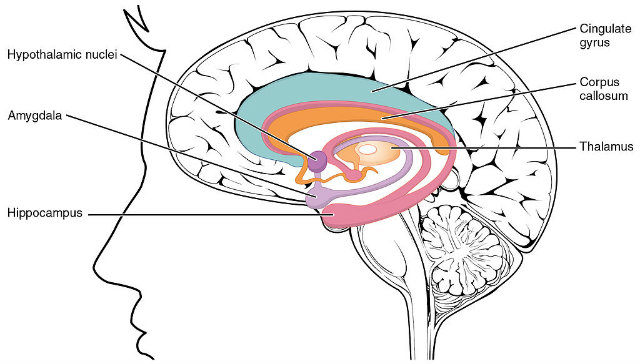 Reading Time: 7 minutes
Reading Time: 7 minutesImagine you’re in an audience at a play. You’re comfortable and really enjoying the show.
At some point, the actor decides he needs to demonstrate a point. He scans the crowd and points to you. Everybody turns and stares. You’ve been selected to participate in something for which you’re not prepared.
Did you sense any reactions in your body as you read this? Did an inner voice cry, “NO”? If so, you’re not alone. In fact, one distinguishing characteristic of being human is the ability to anticipate and attempt to avoid pain.
With thousands of thoughts per day, many of our automatic reactions are meant to keep us safe. Although performance anxiety is somewhat universal, and a bit dramatic, we impulsively say “no” to loads of everyday, typical happenings.
Each “no” contributes to our cumulative lens of reality. Just as drops of water form a stalagmite, each “no” can add to a fearful, overly critical, or cynical perspective. It habituates living in reaction-mode.
But there are ways we can navigate our “no” and turn it into a “yes” — if we choose and want to.

The Science Behind Why We React With No
Our “no” response takes place quickly, deep within the brain in an area called the limbic system. Two main features of this system are the hippocampus and the amygdalae:
- According to the University of Queensland’s Brain Institute, the hippocampus is responsible for memory storage and sensations tied to memories, like when an aroma takes you to a certain place or time. It’s also where new neuron cells are made, so it’s linked to our brain’s plasticity or ability to learn.
- The left and right amygdala play a major role in emotions. They make negative emotions, and associated memories, stronger and “stickier.” This, by design, kept us out of harm’s way as we evolved over time. We can anticipate potential danger, real or otherwise.
Our brains are actually hardwired toward what is called a “negativity bias.” We can have dozens of positive experiences and our brain dismisses them as standard, barely noted. Throw in a negative experience and the brain records it as “NO.” This is becoming so well documented, companies such as the Nielsen Normal Group are assessing it to better understand user experience.

What You Need to Know About Your Limbic System
In modern life, the limbic system reacts as it did in early man. And, without awareness, the fight-or-flight reaction can undermine our experiences and relationships, including the one we have with ourselves.
A jerk cuts you off in traffic, your partner asks for a favor when you’re deeply involved in work, a friend shares your secret with someone, you spill something on your shirt, you have to fire somebody, you get sick right before vacation. These are 21st century versions of danger. And even when you’re too distracted to notice your reactive thoughts, the “no” is recorded in your brain and body.
Ways our bodies can react when we experience “no”:
- Increase in heart rate
- Painful or churning stomach
- Tightness in the chest or throat
- Tension in the eyes, forehead, jaw
- Tension in the shoulders or back
- Clenching in the fingers or toes
- Emergence of a past negative memory
Emotions we might direct at ourselves or others in a “no” moment:
- Shame or blame
- Disappointment
- Worry or anxiety
- Bias or judgment
- Anger or frustration
Indications that you are reacting to a “no” (fight or flight):
- Raise or lower voice
- Lean forward or pull back
- Lash out or shut down
- Busy oneself with tasks to distract
- Ruminate or retell an experience over and over
Which of these signs resonate with your experiences of “danger”? If you’ve never thought about it, you may not know.
What to Do If You Want to Be a Yes
Life is never going to be an experience of never-ending “yes,” but we can learn to respond to the hiccups in a healthier (and more productive) way.
Step 1: Become Aware Without Judgment
The goal of any mindfulness practice is to simply be aware in the moment. Take several days to catch yourself in a “no.” That’s it. Just start to build awareness of the moments. Can you see a pattern? Where are your “no” responses most prevalent? Notice with acceptance. “Yes, that is when I resist.” “Yes, that is when I get annoyed.” “Yes, that is when I shutdown.” Observe and accept without judgment.
In Buddhist teachings, to acknowledge how you feel, but then judge it, is called “the second arrow.” You want to avoid this. Jack Kornfield explains in his article, The Blues Is the Truth:
“The first arrow is the initial event itself, the painful experience. It has happened; we cannot avoid it. The second arrow is the one we shoot into ourselves. This arrow is optional. We can add to the initial pain a contracted, angry, rigid, frightened state of mind. Or we can learn to experience the same painful event with less identification and aversion, with a more relaxed and compassionate heart.”
Step 2: Give Your No a Score
Each time you notice a “no,” rate it based on the intensity of the reaction in your mind and body: NO, No, or no. And again, label it with a “yes.” For example, “Yes, I’m afraid and that is a big NO.” Or, “Yes, I’m frustrated and it’s a small no.”

Step 3: Start Small and Acknowledge Your Effort
Retraining your brain is challenging but possible. Start with a small “no” that arises frequently. When that particular “no” hits:
- Acknowledge it.
- Take a deep breath in and out.
- Close your eyes.
- Notice sensations in your body.
- Breath in and out.
- Label the “no” with the root emotion.
- Ask yourself, “Are there memories associated with it?”
- Give yourself the “yes” acceptance statement.
- End with, “I’m doing my best and so are others.”
Continue this every time this small “no” arises. See if you can recover from it and let it go more easily.
And don’t forget to acknowledge that you are doing your best. It’s important to treat yourself with kindness. After all, your human brain has been storing and supporting “no’s” your whole life. Self-acceptance builds compassion toward others.
Step 4: Take on a Bigger No
If you feel up to the challenge, try the same technique with a bigger “NO.” Using the same method, breathe in a “yes” to the moment. Add an inner smile and accept. Can you get that “NO” reduced to a “No”? Shine some love on yourself and anybody involved. Accept the experience and let it go. Maybe reducing it to “no” prevents some suffering.
You Don’t Have to Fear Your No
It’s critical to note there are times when “NO” is necessary. But it’s often in these moments when we’re too afraid to take a stand. That’s our flight response.
By saying “Yes” to a “No,” you empower yourself to honor your feelings. Rather than sulk or react in a passive aggressive manner, ask yourself, “What do I need?” Say “Yes” to that.

For example, someone makes a snide remark about food you’ve prepared. It hurts your feelings. Pause with a deep breath to slow the reaction. Feel it in your throat. Say to yourself, “Yes, I’m angry and hurt. I’m doing my best and so are they.”
Then, respond by authentically stating what you need or don’t need. For example, “I did my best. I don’t need praise, and I don’t need criticism. You’re welcome to eat something else.” Even if you can’t say it out loud, say it to yourself internally. Smile and let it go.
But You Can Choose to Be a Yes
Accepting our feelings and needs by saying “Yes” can be exhilarating. It keeps us mindful of our tendencies and empowers us to decide how to respond. It helps us live authentically. It frees us from harboring excess negative feelings.
By saying “yes,” we reduce the vicious cycle of suffering that our “no” mentality perpetuates.
Want to give it a try? Say YES.






